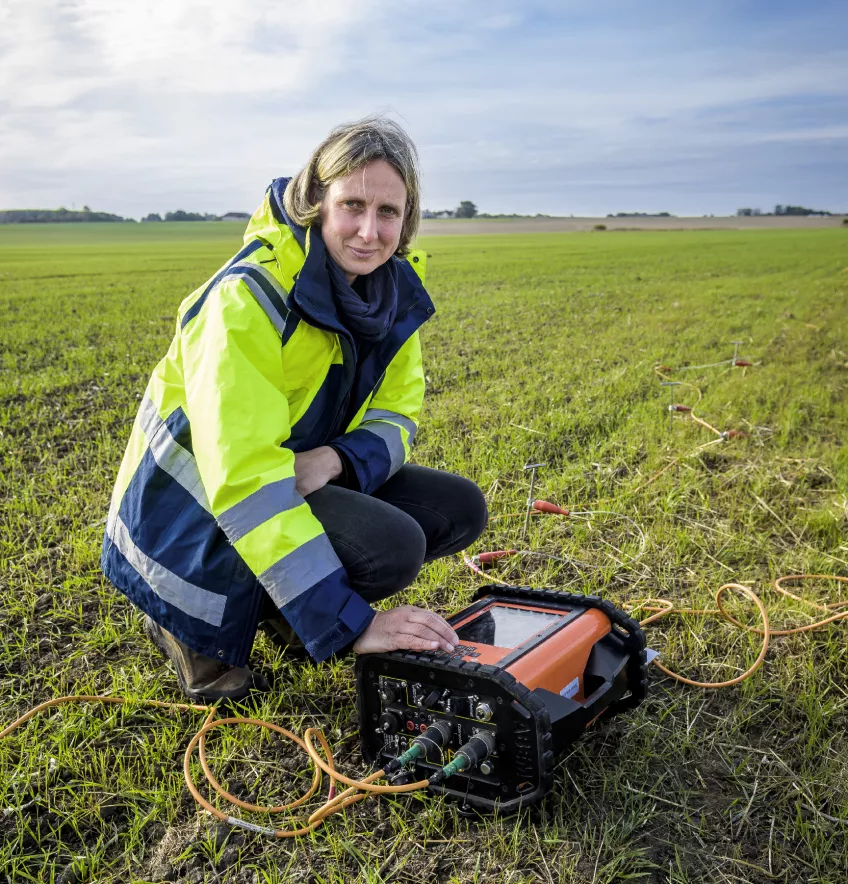Geoscientists and engineers improving efficiency in the construction of the railway of the future
Through an interdisciplinary research project in collaboration with industry, a group of researchers hope to identify a more efficient way of assessing the ground ahead of future construction projects. The results of the research might, for example, accelerate the process of modernising the Swedish rail network.
Minna Wallén-Widung – Publicerad den 19 September 2023

On selected sections of the track between Lund and Hässleholm, a research project is underway that hopefully will, if not revolutionise, as least simplify and speed up future construction projects. The idea is to find a way of making ground investigations more efficient ahead of expansion of the Swedish rail network. The project got underway in May 2022 as a result of the then government’s high speed rail initiative and an idea from industry about a more rational construction method than the one conventionally used.
“The idea is to develop a method of ground investigation that we hope will be more efficient in terms of both time and money,” says Tina Martin.
Thorough preparatory work for the railway of tomorrow
Tina Martin is a researcher at the Division of Engineering Geology and leads the project named REICOR – Rational and effective ground investigations for industrialised construction of new railways. Instead of building the railway directly on the ground, the idea is to place it on high pillars, like a concrete bridge deck. In order to do that, thorough preparation is required.
“When constructing pillars like these, you need to look at the geology and the geotechnical conditions. What is beneath the surface of the ground? What type of material are we dealing with? We also have archaeologists with us, because whenever you are about to start building somewhere, you must check whether there is anything of historic interest on the site.”

Part of Tina Martin’s work involves scanning the underground with drones ahead of expansion of the Swedish railway network. Photo: Kennet Ruona
Drones and radar scan the ground
With the help of drones, Tina Martin and her colleagues can scan large tracts of land significantly quicker than before, when more traditional approaches meant doing measurements on foot. They attach an electromagnetic instrument to the drone which identifies what the ground is made up of in the five areas that have been selected for the project.
“The drone flies above the field and sends electromagnetic waves into ground, giving us a picture of whether it is made up of clay, bedrock or sand. We also plan to do the same investigation using airborne radar.”
Hope to make the entire industry more efficient
The plan is to build up a database into which geological, geotechnical and archaeological data is entered. In the future, the database could be used not only within the rail sector but in other construction too.
In December 2022, the current government decided to put the brakes on plans for high-speed rail in Sweden. That decision will not, however, affect this project.
“The aim is for this to improve efficiency in the planning and construction of transport infrastructure in the entire industry in future,” says Tina Martin.
The article is published in LUM, Lund University Magazine, 4/2023: Geologer effektiviserar utbyggnaden av framtidens järnväg
The REICOR project
The REICOR project is undertaken in collaboration with the drone laboratory at the School of Aviation in Ljungbyhed, Uppsala University, the Swedish Geological Survey and Skanska. The project is financed by InfraSweden, Vinnova, Formas, Swedish Energy Agency, The Development Fund of the Swedish Construction Industry, the Swedish Transport Administration and Lund University.
